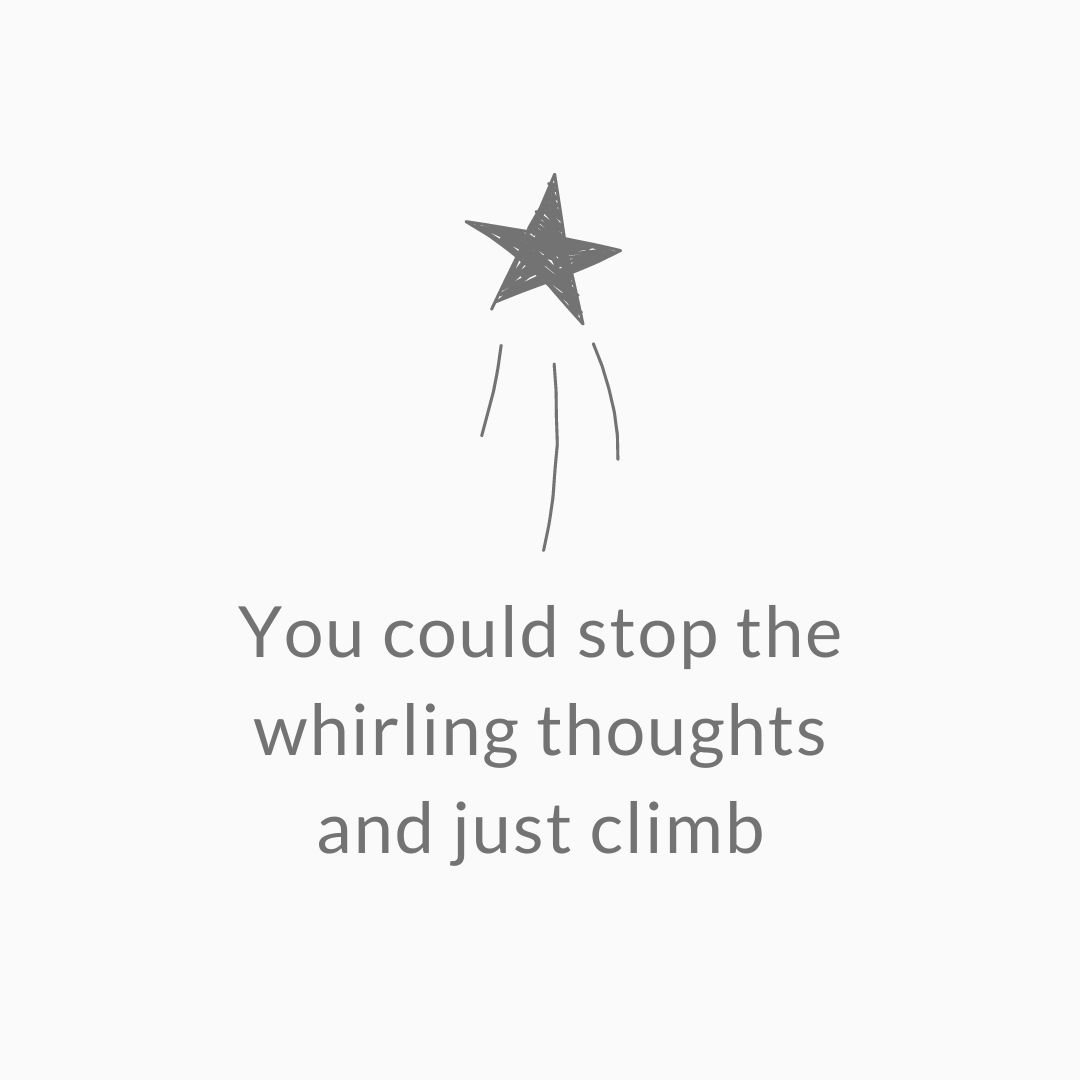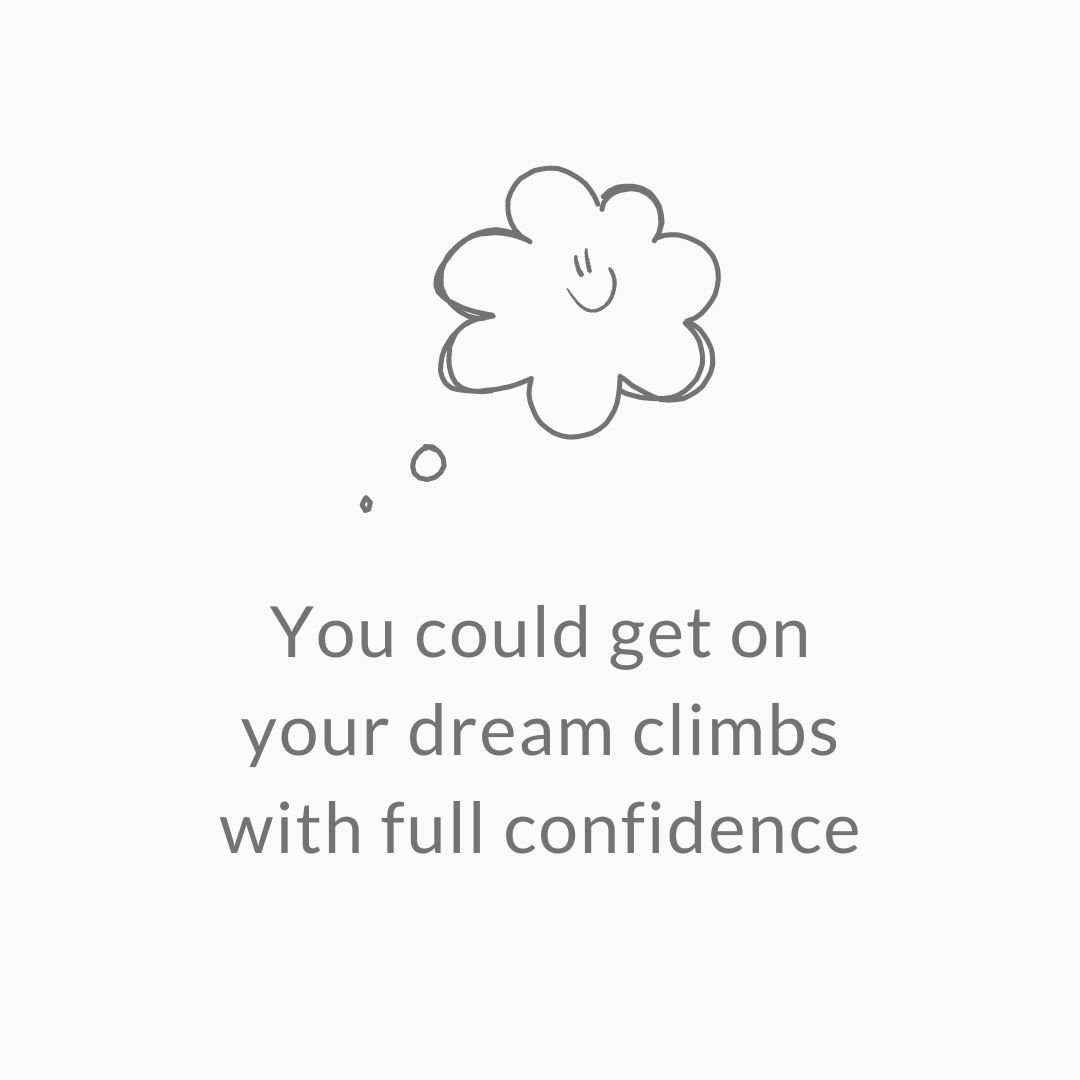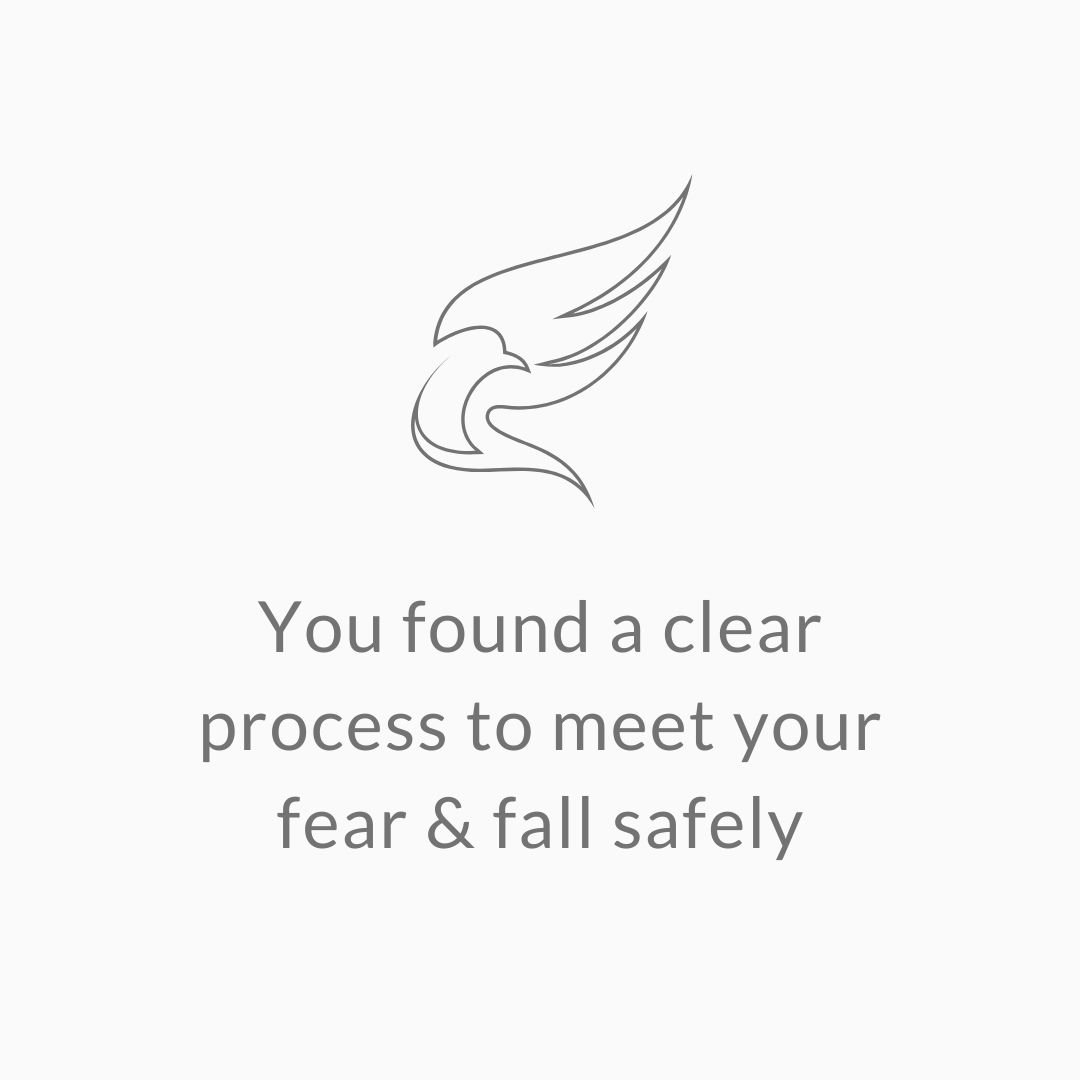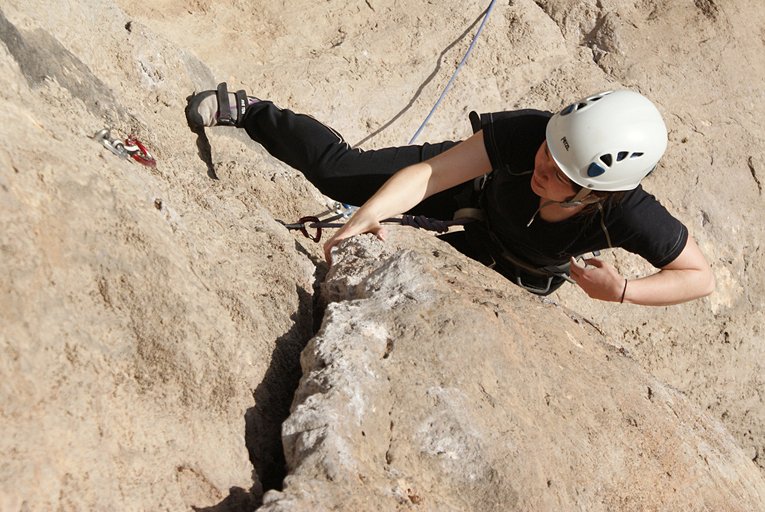Climb Free!
Meet your fears head on
Manage your emotions
Climb with freedom, confidence and flow!
Manage your fears and climb with confidence in 8 weeks - on your own or with group support
Or join September 2025 group course (with invites to an in person day) - limited places!
Do you feel like…
Stress and anxiety is holding you back and it’s stopping you from getting on the climbs you want to do?
You’ve researched extensively about resolving your fears and tried fall practice yet nothing has really worked?
You go from feeling fine on a climb to quickly overwhelmed and stress & anxiety appear from nowhere?
Once the negative thoughts start, you can’t stop them?
You’re fine falling at the climbing wall but not outside?
Everyone else seems to be in control of their fears apart from you?
I don’t want you to feel like that!
Watch this short video to see how Climb Free can help you meet your fear & anxiety and climb with full confidence
Imagine if…
Climb Free is an 8 week online fear of falling coaching course.
It’s available in both self-paced and group format.
The course supports you to meet your stress, anxiety or fears and gives you a process and range of tools for you to feel comfortable in your climbing. You’ll also learn a clear process for how to fall safely with confidence and good judgement. You’ll learn a lot about yourself and your relationship with climbing too.
There are no short cuts with this, but if you bring intention, patience and curiosity, I will guide you every step of the way.
Dealing with a fear of falling is simply not just about fall practice. I think you know that already.
The primary factor, requiring our awareness and attention, is how we feel in our body and mind. That is the key. The aim of this course is to provide you with a new process, habits and tools so that you can regulate your feelings, actively relax your body so you optimise your movement and technique and gently expand your comfort zone, so that when you fall you are ready and prepared.
The only thing you need to do is to be kind, curious, patient and honest with yourself…
“The day after the course finished I onsighted my hardest route to date…
… more importantly I had the confidence to tie on and try it.
I suspected that my fear of falling, even indoors on closely spaced bolts was holding me back more than deficiencies in technique or strength and sure enough Katherine has confirmed it!
There’s a reason the course is the length that it is; there are some habits that need unpicking for this to be a long-term solution.”
Nick Essex
Here is what’s in the course…
Week 1: Motivation
Uncovering your intrinsic motivation and connection to climbing. Knowing your why and establishing your values. This sets the basis for how we approach everything on the course.
Week 2: Science
The autonomic nervous system: what this is, our stress response and how this is shaped individually. You’ll learn the subtle messages our mind/body gives you when you feel good and not so good (both are important here).
Week 3: Breathing
Grounding and breathing exercises to regulate the nervous system, how you feel and help with stress and anxiety.
Week 4: Comfort zones
Creating awareness of our unique comfort zones. How and when to push and also when not.
Week 5: Releasing tension
Identifying where you hold tension in your body and mind before and during climbing. Releasing tension from your movement - the link between our technique and how we feel.
Week 6: Environment
Creating a supportive environment: working with our climbing partners - asserting needs, boundaries and common values. Supportive belaying and taking the first steps to falling.
Week 7: Safe falling
How to fall safely in a controlled environment: falling position in the air, landing position, dynamic belaying. How to build up gradually using everything we’ve learnt so far.
Week 8: Yes and No falls
Beyond a controlled fall practice: discerning the difference between yes and no falls and falling in different environments and situations.
+ Invites to in person day
On this additional, optional day (if you can make it) we’ll meet up at a climbing wall in Sheffield to consolidate all the learning. Priority will be given to group course but if there are spaces I’ll open up to anyone doing the self paced course.
Self paced course includes:
8 x modules each delivered in video format
4 Bonus video resources
Weekly exercises to be done on and off the climbing wall (or crag)
Reflective questions to support the weekly exercises and learning
Safe fall practice resource
Access to the course community
Your questions answered via the community page
At least 1 year access to the course
£140
Climb Free Class of ‘22
Group course includes:
Everything in the self-paced version plus:
8 weekly live group Q&A sessions
Email contact with Katherine throughout
Invite to in person climbing day for learning consolidation with Katherine at the end of the course*
Learning in a small group (up to 6 people) with and from others is one of the biggest benefits people described on previous courses.
*Attending the in person day is optional if you can make it - there is an extra cost for this (cost shared between number of people attending)
Starts 2nd September 2025
In person day Oct/Nov 2025 TBC
£300
You don’t have to stay stuck in fear. You don’t have to let stress hold you back. Join Climb Free today or in a group and in just 8 weeks, you’ll have the tools, confidence and mindset to climb at your full potential.
“The Climb Free course has helped me realise my potential.”
Since applying what I have learnt on the course I can now climb right up to my physical limit on onsight attempts, moving well and making good decisions despite being pumped out of my mind.
Katherine’s approach to understanding how and why you climb and how your own nervous system is tied in has made me fundamentally change my approach to climbing. This has led to less fear, more enjoyment and ultimately what every climber wants, bigger grades!
Ian Milton Keynes
I’m Katherine
A fluctuating confidence and a fear of falling has reared its head over the years in my climbing. I know what it feels like to be strong, fit, have good technique and then know the mind is getting in the way. Sometimes I felt brave and on it, other times I did not.
The unpredictability was almost as bad as the tricky emotions. When the stress took over, I would back down, deal with negative, spiralling thoughts and be unsatisfied with knowing I just hadn’t given it my all or even just not get on a route all together. Worse still, sometimes I avoided climbs altogether.
It’s been a personal mission over the years to resolve it in myself.
And also my clients.
Over the 15+ years I’ve been coaching I’ve seen stress and anxiety manifest in many different ways in my clients. After years of working with people on this topic, it’s clear everyone needs a slightly different approach and also it cannot be approached alone; there are far more factors going on in a climbing day than just you and your mind.
How the course works
What people say about the course…
“I was amazed at how well and free of fear I climbed on my first day out on the rock this spring.
It was one of those afternoons climbing that I will remember and return to in my mind because it felt great. When I analyzed this feeling I realized that I had created this environment that enabled me to climb well. I think Climb Free is a great name for your course. Because it’s so much more than dealing with a fear of falling and fall training, it’s about learning about all the factors that can affect your performance on the day. So with that awareness you can begin to CLIMB FREE!”
Caro France
“Fantastic course - intelligent and insightful.”
I learnt a huge amount about myself & my climbing.
Totally recommend!
Becca London
“Climb Free was extremely valuable for me. “
It helped me to evaluate my motivations for climbing and gave me a clear way forward in tackling my fear of falling. The group setting was great. My fear always made me feel alone in a sport which can often feel macho and praises people for being bold. The group discussions and Katherine helped me to realise that everyone gets scared, it’s more about how you can deal with it.”
Carys Sheffield
“The course has made big impact on my climbing right from the beginning.
During the course I was able to identify various elements that were feeding my fear of falling. Katherine’s holistic approach to climbing and all the course content helped me become more mindful. I am now on regular basis practising what I have learnt and implementing the tools that help me to climb in more relaxed and focused way!”
Daniela London
“I believe this course has helped me enjoy climbing a lot more. “
It’s changed the way I feel about my whole climbing experience.
I’m more aware of thoughts and feelings while climbing and in my everyday life.
It’s given me the tools to challenge my inner voice and be positive about falling and managing injury/training/partners.
Katherine and my fellow climbers were very supportive throughout.
Paul Birmingham
Who is the course for?
- Anyone who feels their stress, anxiety or fear of falling is getting in the way of their climbing
- Anyone who wants to understand more about themselves and their psychological approach to climbing (where your fear of falling is just a niggle)
- Indoor & outdoor route climbers
- This course sets a foundation for any kinds of climbing, but some of the exercises may be best applied indoors to begin with
-
You can either do the course straight away (at a lower cost) self-paced. Or you can do a live small group course. The following dates are availble:
Starts: 18th March 2025
Starts: 2nd September 2025
-
Each video module is somewhere between 20 and 40 minutes long and you can watch these in your own time. In addition there is a 1 hour live Q&A session each week for the grout. You can do the exercises during your climbing sessions. Other exercises look into your wider mindset and you can do as you’re going about your normal day (away from climbing).
-
Ideally yes but at the start of the course you can work on the exercises away from the wall, but as the course progresses you’ll need to access climbing of some kind.
-
This course sets the foundation for any kind of route climbing. However it is not a specialist trad climbing course. Trad climbing is of course massively varied and has its own specific considerations. I recommend this course as a starting point for investigating falling on trad gear and I will reference it during the course.
-
Yes, to some extent, however as thw course progresses there will be a greater focus on route climbing. Dealing with fear in bouldering requires a slightly different set of skills.
-
Depending on your experiences, this may happen and I am sensitive to these issues and this possibility. This course is not designed to support you with specific trauma. This requires specialist support. If difficulty arises in you I will help you to find the right support you need.
-
When you buy the course you have a 14 day cooling off period, as long as you don’t access the course materials during this time.


















